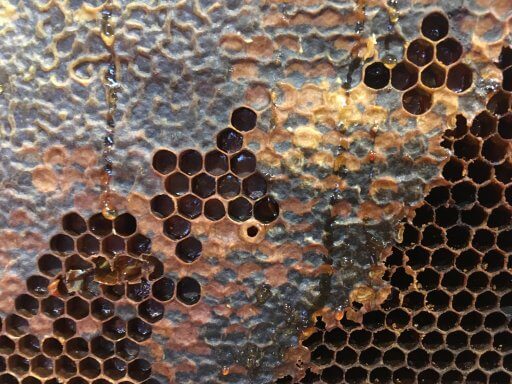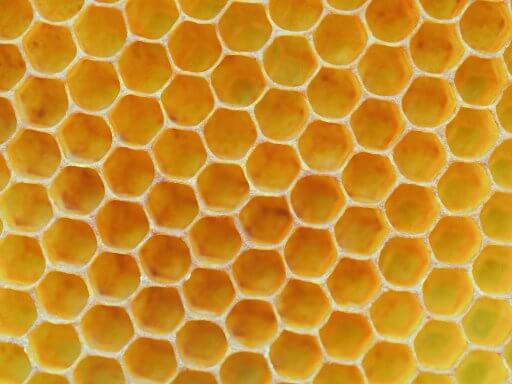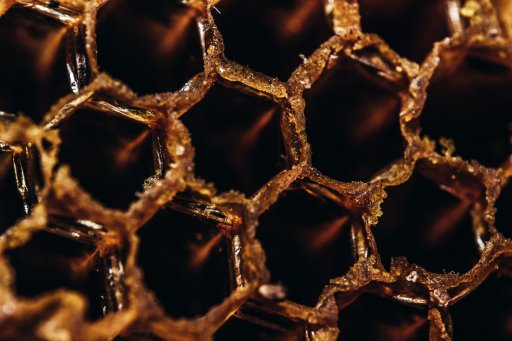The honeycomb design is unmistakable and iconic – lending its likeness even to famous cereal brands. Honeycombs don’t just look cool and utterly unique; behind the impressive architectural facade, there is genius functionality.
Here, we’ll explore why honeycombs look the way they do.
Honeycombs Are the Building Blocks of the Hive

Before we get into the reasons for the unique design of honeycombs, let’s first discuss why these structures are so important to the overall health of the hive.
Honeycombs serve as the breeding ground for new bees as well as the storage site for honey – two absolutely essential functions to keep the hive buzzing along.
Bees are experts at resource conservation – doing the most with the least amount of materials. In his seminal book on natural selection, the renowned pioneering expert on biology and evolution, Charles Darwin, labeled the bees’ hexagonal honeycomb design the result of “an economy of wax.”
Given the critical role of honeycombs in the survivability of the species, it follows that the honeycomb design must be bulletproof in terms of form and function – hence the hexagonal shape.
Why Are Honeycomb Cells Hexagonal?
Honeycomb cells are six-sided shapes with equal-length sides – or, in the Greek-derived syntax, hexagons. The hexagon, as the masterful paragons of efficiency, the bees, have discovered, is mathematically the most efficient use of precious resources and space.
Honey bees have earned the distinction of being nature’s “genius engineers” which informs their utilization of hexagons in their honeycomb designs, among their other ingenious innovations in efficiency as well as their complex social structures.
This Ted Talk does a great job breaking down how honeycomb hexagons provide maximum storage space compared to other potential shapes:
For example, a circular design would result in empty spaces between the cells – precious wasted space. Similar problems present themselves for other potential shapes. The hexagonal method is, again, simply the most efficient.
Some even consider naturally-occurring hexagonal patterns to be sacred relics of intelligent design in nature. For sure, the truly remarkable honeycomb architecture demonstrates that nothing in nature happens by accident – the bees evolved their hexagonal building patterns based on hard science.
Just as human engineers have gleaned insights for technological innovations from bees’ wing designs, they have also applied the hexagonal designs found in nature to develop more utilitarian designs in the tech field:
“One of the more famous modern use of the hexagonal patterns is the James Webb Space Telescope, designed and produced to replace the famous-but-aging Hubble Space Telescope.
The original pattern of the Hubble Telescope was circular…
Then, a man named Thomas Hales proved an ancient mathematical concept (dated back to as early as 36 BC!) on the structure of the hexagon, known as the Honeycomb Conjecture… maximising the area-to-perimeter ratio, and saving space in the process
Thanks to that, the engineers at NASA… were able to design a brand new telescope and focusing lens that far surpasses the venerable Hubble Telescope, a massive 6.25x increase in surface area!”
The telescope saga exemplifies once again that nature is the best teacher, and honey bees are its tenured professors.
Learn More About the Amazing Honeycomb From the Beekeeping Masters
Contact us with any and all honeycomb or other beekeeping-related questions. We’ll get back to you with the answer based on our decades of multigenerational beekeeping experience.

